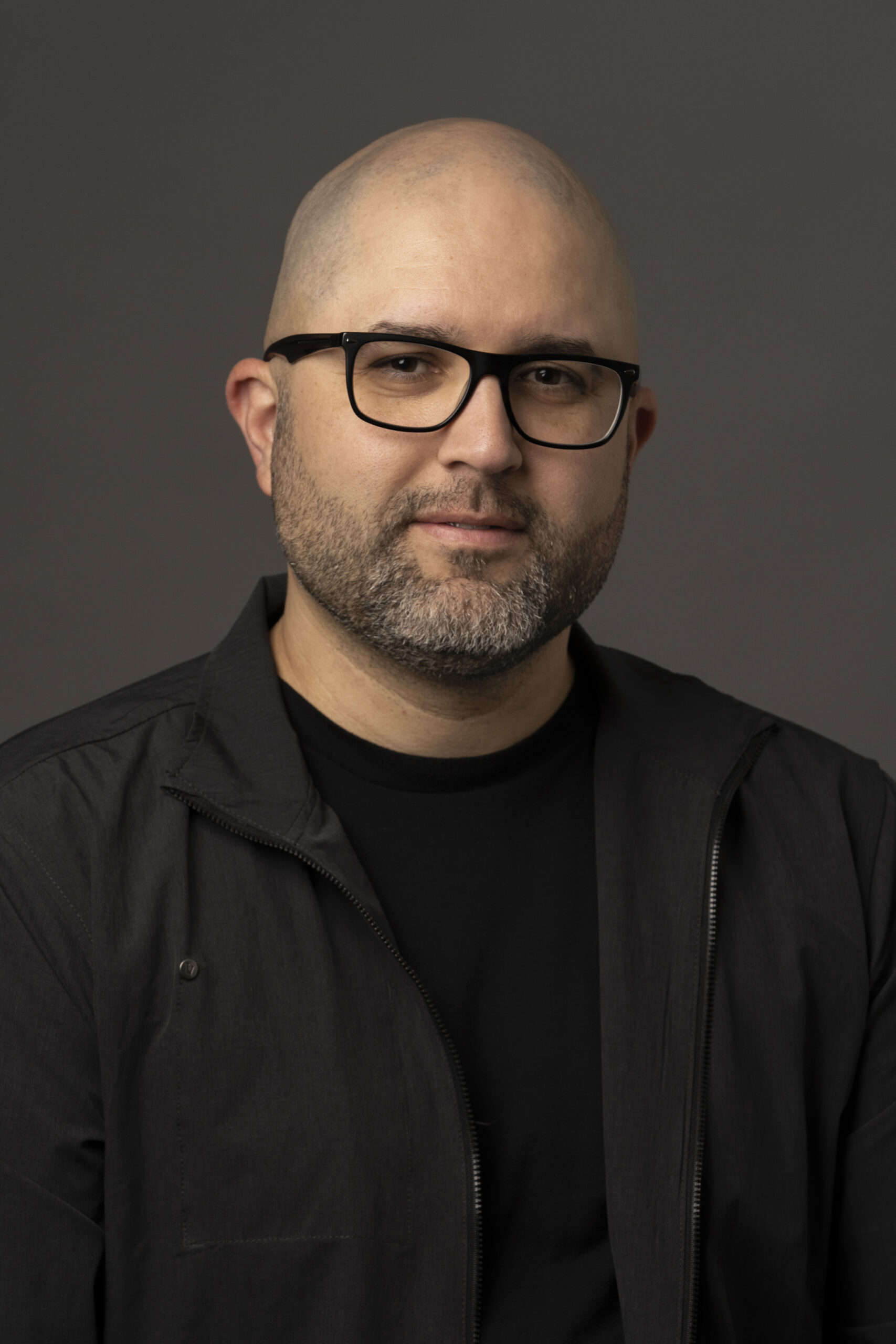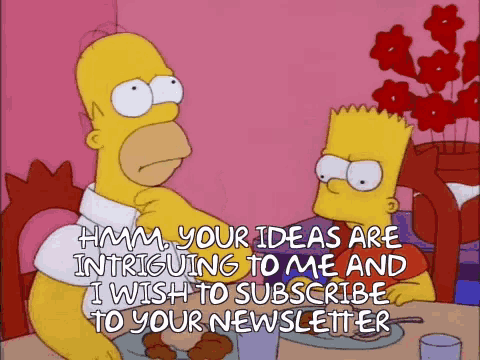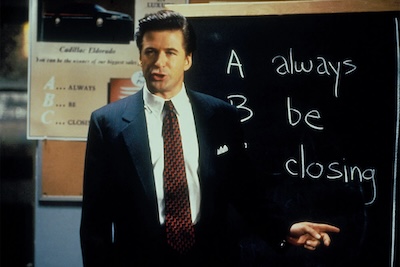Josh Cooley (Toy Story 4) directed this fall’s critically acclaimed animated movie Transformers One. As someone who has been involved in animation on so many levels, he talks about how he gained all that experience and how some of it came about accidentally. Approaching Transformers One, Cooley understood that giving an origin story to Optimus Prime and Megatron was risky, but he had a good method for dealing with it. Also, he talks about some interesting ideas he wants to try in the future.

A di BONAVENTURA PICTURES Production A TOM DESANTO / DON MURPHY Production
A BAY FILMS Production “TRANSFORMERS ONE”
The Contending: Do you have any personal history with Transformers as a product?
Josh Cooley: Yes, I grew up in the ’80s and Saturday morning cartoons like Transformers, GI Joe, Gummy Bears, and Looney Tunes were all staples for me. These shows are what made me want to become an animator, so I went to school to do 2D animation specifically. I love the toys, and I still have my toys that my parents had stored for 15 years. So it’s really coming full circle coming back to Transformers.
The Contending: With this film you’re creating an origin for characters that have been around for decades. So fans will have a lot of investment in this. What is it like taking on that kind of story?
Josh Cooley: As a fan, I knew the pressure was there but I tried not to think about it because otherwise I would have just crumbled. It really didn’t hit me until our premiere in New York, because that day had been forty years to the day that the very first cartoon aired. I said that in front of everybody and they were all, like, whoa! So at that moment it really hit me how big it was. Optimus and Megatron are so iconic, even people who don’t know Transformers know who these characters are and their struggle against each other, as well as their iconic voices. So I felt if we could really sell their relationship in the beginning then it would be tragic to see them fall apart. That was the big thing for me because this whole movie is about their relationship, and how they become enemies at the end of the movie. So that is what I focused on, and tried not to think of it as a franchise but just about those two characters.
The Contending: One part I found interesting was Megatron’s transformation. He starts being more of the goody two shoes just wanting to follow the rules, and by the end while he has fallen into a definite dark place you understand how he has reached that place. Was that something that was of interest to you as well?
Josh Cooley: Absolutely. I felt that you had to understand him because we’ve only seen him in previous versions as the bad guy who wants power and control. You cannot get behind that kind of character, it’s very one-dimensional. To buy that Optimus is actually friends with him there had to be more. The most fun story wise for this movie was how do we make Megatron’s argument valid, to the point where you go, yeah, I understand where he’s coming from and what he has been through and why he would feel that way. But we see that Optimus understands it as well, letting us see the full dynamic of their friendship. It’s not just that we’re holding hands and skipping through the flowers. No, right from the beginning even before they learn the truth, they have some connection with each other that makes it feel like a real relationship. I love that this is the most human story told within Transformers.
The Contending: As a technical matter, this film has tons of fast action pieces, the race they get into as well as several battle sequences. As a director, how do you follow and direct those movements on the screen?
Josh Cooley: One of the benefits of doing a movie that’s completely on Cybertron is that the characters don’t have to fully transform. They are not robots in disguise hiding from people. That opened up a lot of options for us like they could partially transform if they need to. For example, in the race we have a motorcycle jumping over somebody but it only transforms part of their body then goes back to the vehicle. So it allowed us to do completely new moves and action that hasn’t really been seen before. The other thing is I wanted to take advantage of the fact that they are Transformers and thought about what specific thing can we only do for this film that no other film could do. I loved the idea of having these fight scenes, specifically in the third act, being pure transformation fights. These were things you couldn’t motion to capture because it would literally break the back of the actors if they tried to do it. So a punch becomes a gun that pops out and hits them, instead of ducking, his head goes into the body. So everything was built around the fact that these are Transformers.
The Contending: Looking over your filmography, you’ve been involved at all levels of animation. You’ve been a storyboard artist, a director, a writer, and have done voice work. What made you want to take on all those different aspects of animation?
Josh Cooley: Sometimes I have just fallen into it. I know that sounds ridiculous but I started off as a storyboard artist, and back in the old days when you were pitching ideas using paper storyboards to the director you just naturally started to do voices to indicate different characters. Then sometimes the director will go, hey, I like what you are doing there, go record that for scratch track. Then all of a sudden you’re in front of a microphone and you’re acting. Same thing with writing. I was working on the first Inside Out and I was asked to come up with some ideas for how Joy could keep Sadness in the back of headquarters. So I pitched some ideas and Pete Docter was, like, “Yeah, let’s do that! Go write that down.” I was, like, okay, I think I have Final Draft software. So I started typing it up and, by the end of the production, I had written enough that I got credit on the film. So I fell into writing that way. In a weird way it’s all kind of the same thing, it’s all filmmaking, it’s just all smaller aspects of it and they are all connected.
The Contending: This is only your second feature film that you have directed. How is it different from your first time directing? Was there anything that stood out that made it a different experience?
Josh Cooley: Oh for sure! My career started at Pixar, and I was there for 18 years, and so when I was directing Toy Story 4 I knew everybody and I knew the process in that building. When I had left Pixar and went to Paramount and started working on Transformers I only knew two people. Everyone else was new, and it was really great meeting people from all over the world. I travelled to Australia to work with ILM (Industrial Light and Magic) to do the animation, and it was really refreshing to do a different style of movie as well. This is the first big action thing I’ve ever done so I was able to work a different side of my brain.
The Contending: Do you have some ideas of what you want to work on next?
Josh Cooley: I’m really interested in getting into live action and hybrid filmmaking. I’d love to do something that uses what I know of CG animation and work it into something new and different. I love that we’re in this time right now where styles and storytelling are being pushed. Everything that I’m looking at now is really inspiring, and I really want to see how far I can push the medium into different genres to see what is possible and really surprise people. I think what I’ve taken from both films is that, while they are both part of franchises, they gave people something they didn’t expect. In fact, they didn’t know they wanted it that way! It has been really rewarding to have people come up to me and say, I grew up with these characters but you brought a whole different angle to it. That is a very fun experience.
The Contending: Yes, I can see that, in seeing the Toy Story movies, having Toy Story 4 focus on Woody and Bo Peep’s relationship, which was one of the one things they hadn’t done. I thought that was great.
Josh Cooley: Thank you.
The Contending: Final thoughts?
Josh Cooley: I will say this movie, Transformers One, would not have been made without this incredible crew that I had at ILM and Paramount. They put so much love and nostalgic love as well into this film and I think you can feel that. Even if you didn’t grow up watching Transformers, my gut says you can still feel it and you’ll feel like a little boy again. It was so much fun working with them and the producers that also worked on the live action movies, Lorenzo di Bonaventura and Mark Vahradian. They helped me out so much just in letting me know what the fan base knows and what they like and don’t like and just storytelling-wise in this universe. I was very happy and proud of the movie and the group that worked on it.
Transformers One is now available to stream on Paramount+, Amazon Prime Video, and other services.








![‘Pirates! The Penzance Musical’ Breakout Star Nicholas Barasch Discusses Performing On The Tonys With Seven Stitches On His Face [VIDEO]](https://thecontending.com/wp-content/uploads/2025/06/Pirates0011r-120x86.jpg)
